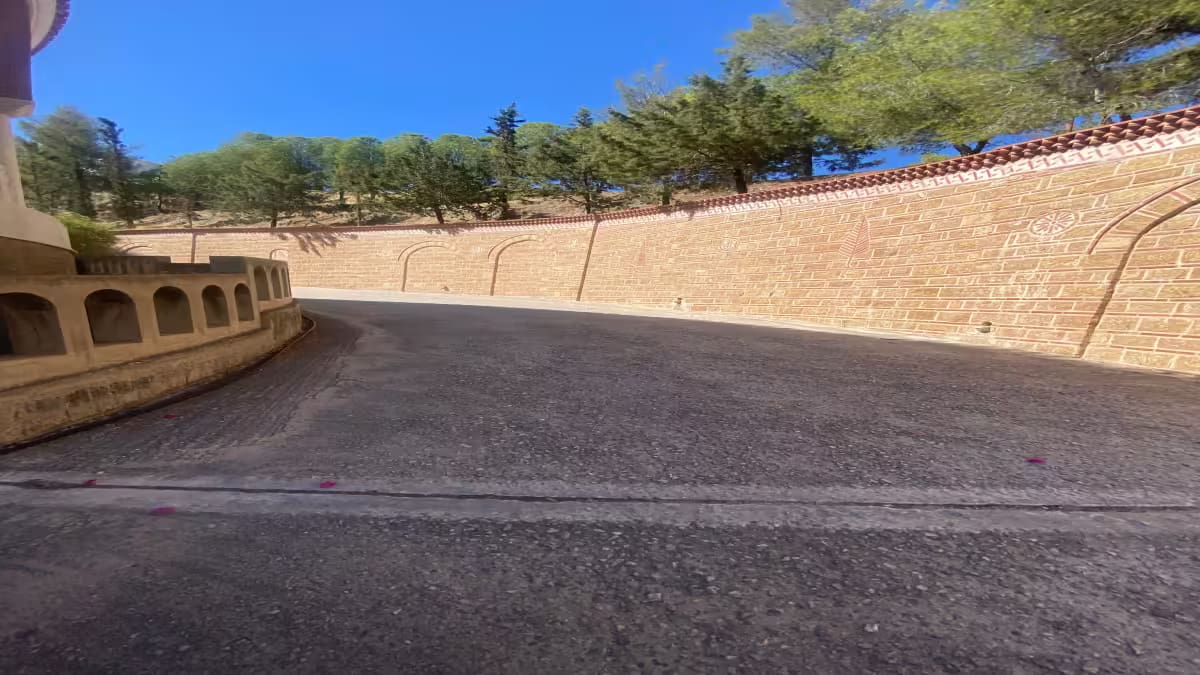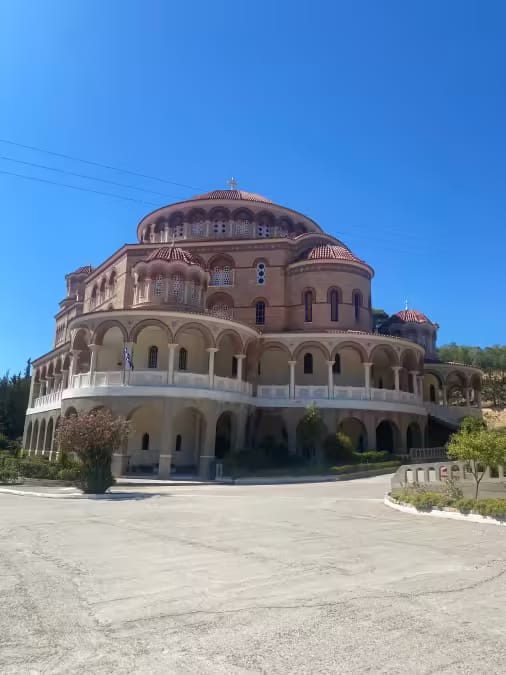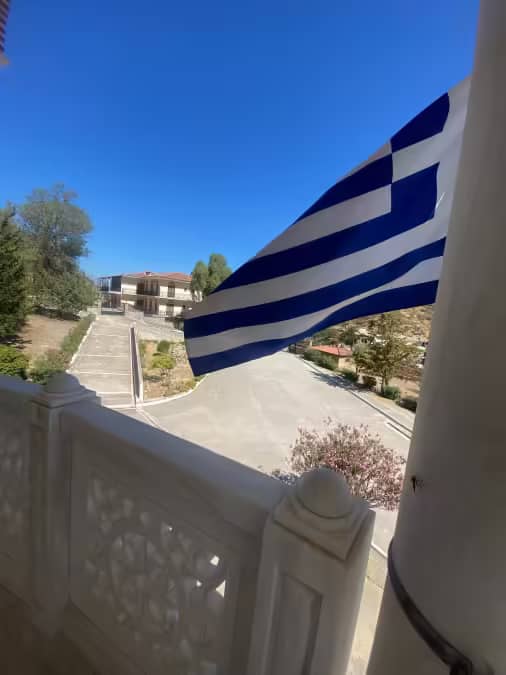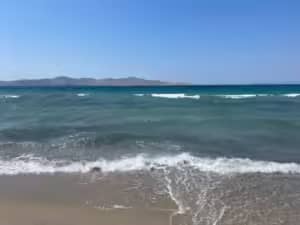Nestled on the serene island of Aegina, just a short ferry ride from Athens lies one of Greece’s most revered spiritual sites: the Monastery of Agios Nektarios. This beautiful monastery, dedicated to Saint Nektarios, not only serves as a place of pilgrimage for devout Orthodox Christians but also captivates visitors with its tranquil atmosphere, stunning architecture, and rich history.
A Brief History of Saint Nektarios
To understand the significance of the monastery, it’s essential to delve into the life of the man behind it: Saint Nektarios of Aegina. Born as Anastasios Kephalas in 1846 in Selymbria (modern-day Turkey), Nektarios faced many hardships in his early life. Despite these challenges, his unwavering faith led him to pursue religious studies and eventually become a monk.
Saint Nektarios’ life was marked by his dedication to education and his commitment to the spiritual well-being of those around him. He served as the Metropolitan of Pentapolis in Egypt, where he became known for his piety, humility, and miraculous healings. However, his rising popularity and influence led to envy among his peers, resulting in his unjust removal from his position.
Despite this setback, Saint Nektarios continued to serve the Church with humility. In 1904, he founded a convent on the island of Aegina, which would later become the Monastery of Agios Nektarios. It was here that he spent the last years of his life, dedicating himself to prayer, teaching, and writing until he died in 1920. Saint Nektarios was canonized as a saint in 1961, and his relics are believed to have miraculous healing properties, drawing thousands of pilgrims each year.
The Architecture and Grounds of the Monastery
The Monastery of Agios Nektarios is an architectural gem that reflects the Byzantine style, which is prevalent in many Orthodox Christian religious buildings. The monastery’s design is characterized by its red-tiled domes, arched windows, and intricate mosaics that depict scenes from the life of Christ and various saints, including Saint Nektarios himself.
As you approach the monastery, you are greeted by a towering bell tower, which stands as a symbol of the monastic community’s devotion. The bell tower, with its elegant arches and cross-topped spire, is a striking feature that can be seen from a distance, inviting visitors to enter this sacred space.
The main church, or katholikon, is the centerpiece of the monastery. Its interior is adorned with beautiful frescoes and icons, each telling a story of faith and devotion. The iconostasis, a wall of icons and religious paintings that separates the nave from the sanctuary, is particularly impressive. Exquisitely detailed, it stands as a symbolic portrayal of the divine.
One of the most important sites within the monastery is the tomb of Saint Nektarios. Pilgrims and visitors often pause here to offer prayers and seek the saint’s intercession. The atmosphere around the tomb is one of deep reverence and peace, providing a moment of reflection for all who visit.
The monastery’s grounds are equally serene, with well-maintained gardens, olive groves, and pathways that encourage quiet contemplation. As you stroll through the gardens, you’ll find benches strategically placed to offer views of the surrounding landscape—a perfect spot to soak in the beauty of Aegina and reflect on the spiritual journey that brought you here.
Pilgrimage, Miracles, and Sacred Artifacts
The Monastery of Agios Nektarios is not just a historical and architectural marvel; it is also a living testament to the faith of countless pilgrims who visit each year. Many come seeking healing, guidance, or simply a deeper connection to their faith. The monastery is believed to be a place where miracles happen, with numerous accounts of physical and spiritual healings attributed to the intercession of Saint Nektarios.
Visitors often attend services in the church, where the chanting of the monks creates a mystical ambiance that enhances the spiritual experience. For those looking to participate in these services, it’s helpful to know that the monastery holds daily prayers and services. However, the most spiritually enriching experience can be had on Sundays and major feast days, when the liturgies are particularly solemn and filled with the presence of pilgrims from around the world. The Feast Day of Saint Nektarios, celebrated on November 9th, is particularly significant, drawing large crowds who come to honor the saint with prayers, hymns, and processions.
For those interested in the life and teachings of Saint Nektarios, the monastery also houses a small museum. The museum contains a fascinating collection of artifacts that provide insight into the saint’s life and the early years of the monastery. Among these, visitors can find the personal belongings of Saint Nektarios, such as his vestments, prayer books, and even his writing instruments. Additionally, the museum displays various manuscripts written by the saint, which reveal his deep theological thoughts and his commitment to education. These artifacts are complemented by a range of religious items, including rare icons and ecclesiastical objects that reflect the spiritual heritage of the Orthodox Church. This collection serves as a valuable resource for understanding the impact of Saint Nektarios on Orthodox Christianity and the enduring legacy of his work.
How to Visit the Monastery
Visiting the Monastery of Agios Nektarios is a must for anyone traveling to Aegina, whether you are a religious pilgrim or simply someone interested in Greek history and culture. The monastery is located about 6 kilometers from Aegina Town, making it easily accessible by car, taxi, or even a rented scooter.
As you plan your visit, it’s important to remember that the monastery is an active place of worship. Visitors are expected to dress modestly and respect the sacred nature of the site. Women should cover their shoulders, while men should avoid wearing shorts.
The best time to visit is during the spring or early autumn when the weather is pleasant and the island is less crowded. However, if you wish to experience the full vibrancy of the monastery’s spiritual life, visiting during the Feast Day in November is highly recommended.
After you visit the monastery, take the opportunity to explore the rest of Aegina. The island is known for its charming villages, beautiful beaches, and delicious local products, particularly its famous pistachios. A day trip to Aegina offers a perfect blend of spiritual reflection and leisurely exploration.
A Final Reflection
The Monastery of Agios Nektarios is more than just a religious site; it is a place where history, faith, and beauty converge. Whether you come seeking solace, inspiration, or simply a moment of quiet in a busy world, the monastery offers a unique experience that touches the heart and soul.
For those with a deep interest in Greek Orthodox spirituality, a visit to the Monastery of Agios Nektarios is an opportunity to connect with the rich traditions of the Church and to walk in the footsteps of a modern saint. For others, it is a chance to explore the cultural and historical heritage of Aegina, an island that has played a significant role in the spiritual life of Greece.









Deja una respuesta